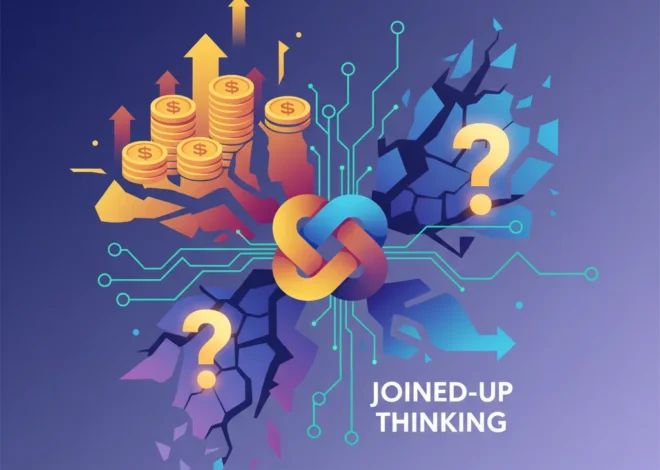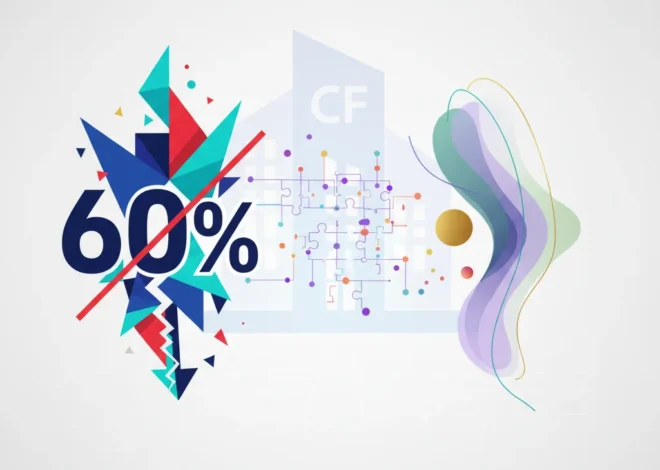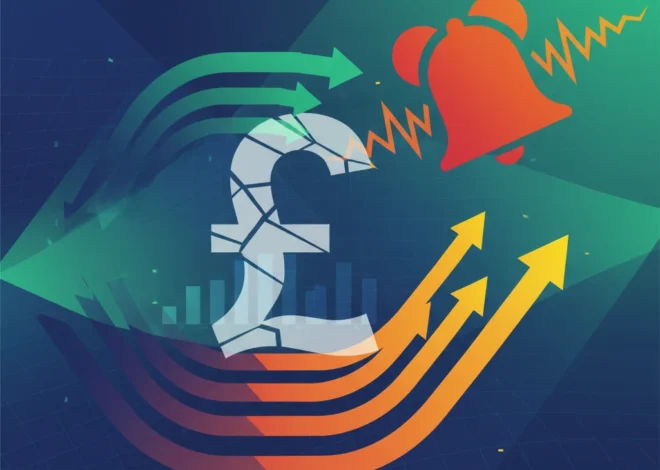
Beyond the Headlines: Decoding JPMorgan’s Record Profits and a CEO’s Stark Warning
In the world of finance, numbers often tell a compelling story. When JPMorgan Chase, a titan of the global banking industry, announced its first-quarter earnings, the headlines wrote themselves. A 6% surge in net income to a staggering $13.4 billion, fueled by a 9% rise in revenue to $42.5 billion, painted a picture of robust health and unmitigated success. The performance comfortably beat Wall Street expectations, driven by a powerful recovery in investment banking and the continued tailwind of higher interest rates. Yet, in a curious twist of market logic, the bank’s stock price stumbled in the aftermath.
This apparent paradox reveals a far more nuanced and critical narrative lurking beneath the surface of the stellar figures. It’s a story not just about a successful quarter, but about the growing chasm between present performance and future anxiety. While the balance sheet celebrated today’s victories, the commentary from its veteran CEO, Jamie Dimon, sounded a clear alarm about the economic storms gathering on the horizon. This deep dive will unpack both sides of the JPMorgan story: the powerful engines driving its current profitability and the profound uncertainties that have one of the world’s most influential bankers urging caution. For investors, finance professionals, and anyone attuned to the pulse of the global economy, understanding this duality is key to navigating the complex landscape ahead.
A Trifecta of Success: The Engines Behind the Earnings Beat
JPMorgan’s impressive first-quarter results weren’t accidental; they were the product of strong performance across its key divisions, each capitalizing on the current economic environment in different ways. This wasn’t just a single engine firing on all cylinders, but a coordinated surge from the bank’s core operations.
The Reawakening of Investment Banking
Perhaps the most encouraging sign for the broader financial market was the potent revival in JPMorgan’s investment banking arm. The division saw its fees skyrocket by 27% to reach $2 billion. This is a critical indicator. For the past two years, the worlds of mergers and acquisitions (M&A) and initial public offerings (IPOs) have been in a deep freeze, chilled by rising interest rates and economic uncertainty. Companies were hesitant to make big bets or go public in such a volatile climate.
This significant uptick in fees suggests that the ice is beginning to thaw. It signals a renewed corporate confidence, where business leaders are once again willing to engage in large-scale strategic transactions. This resurgence is vital not just for JPMorgan’s bottom line, but as a bellwether for the health of the stock market and the broader economy. A busy M&A market often precedes wider economic growth and an active IPO pipeline provides fresh opportunities for investing.
Resilience in the Trading Pits
While investment banking provided the explosive growth, the bank’s trading division delivered the steady, reliable power. In an environment marked by geopolitical tension and shifting monetary policy, market volatility is a double-edged sword. For JPMorgan’s traders, it proved to be an opportunity. The markets division posted revenue that, while only up slightly, handily beat analyst forecasts. This demonstrates the bank’s ability to navigate and profit from uncertainty, leveraging its sophisticated financial technology and risk management systems to stay ahead of market movements. This steady performance provides a crucial buffer, ensuring consistent revenue even when other parts of the banking ecosystem are under pressure.
The Power of High Interest Rates
The primary driver of JPMorgan’s revenue growth remains its Net Interest Income (NII). NII is the fundamental business of banking: the difference between the interest a bank earns from lending (on mortgages, credit cards, and corporate loans) and the interest it pays out to depositors. In a high-rate environment, that spread widens, leading to a surge in profits. JPM’s NII climbed an impressive 11% to $23.2 billion for the quarter. This has been the story for the entire banking sector over the past 18 months, as central banks hiked rates to combat inflation.
To put these powerful results into perspective, here is a snapshot of JPMorgan’s key Q1 2024 financial metrics:
| Metric | Q1 2024 Figure | Year-over-Year Change |
|---|---|---|
| Total Revenue | $42.5 Billion | +9% |
| Net Income | $13.4 Billion | +6% |
| Net Interest Income (NII) | $23.2 Billion | +11% |
| Investment Banking Fees | $2.0 Billion | +27% |
Reading the Tea Leaves: Why Jamie Dimon Is Sounding the Alarm
While the numbers celebrated the present, Jamie Dimon’s annual letter to shareholders, released concurrently, focused squarely on the future. His tone was not celebratory but deeply cautious, highlighting a series of macroeconomic and geopolitical threats that he believes the market is underestimating. This is more than just standard corporate prudence; when the leader of the largest U.S. bank expresses such deep-seated concern, it’s a signal that ripples across the entire global finance ecosystem.
The “Significant Uncertain Forces”
Dimon outlined several key risks that he believes could derail the current, seemingly benign economic picture. These are not minor concerns but systemic threats with far-reaching implications.
- Persistent Inflationary Pressures: While inflation has cooled from its peak, Dimon is concerned about the “stickiness” of rising prices, driven by high government spending, the costs of the green energy transition, and global supply chain restructuring. He warned that the path to a 2% inflation target may be longer and more painful than many expect, forcing central banks to keep rates higher for longer—a move that could eventually stifle economic growth.
- Geopolitical Turmoil: The ongoing wars in Ukraine and the Middle East represent a profound source of instability. Dimon stressed that these conflicts have the potential to disrupt energy and food markets, rattle international trade, and reshape diplomatic alliances in ways that are deeply detrimental to the global economy. This level of geopolitical risk, he argues, is the highest it has been in decades.
- Quantitative Tightening (QT): Perhaps the most complex but critical of his warnings revolves around quantitative tightening. For years, central banks engaged in Quantitative Easing (QE), buying trillions of dollars in bonds to inject money into the financial system. Now, they are reversing the process with QT, shrinking their balance sheets and effectively removing that liquidity. Dimon noted that the full effects of this unprecedented monetary experiment—especially its withdrawal—have never been experienced before and could create significant stress in the stock market and the broader banking system.
This cautious outlook isn’t just talk. The bank backed it up with action, increasing its provision for credit losses to $1.9 billion. This means setting aside more capital to cover potential defaults on loans. It’s a tangible sign that while borrowers are healthy today, the bank is preparing for a future where that may no longer be the case.
The Bigger Picture: What JPMorgan’s Quarter Means for You
As a bellwether for the U.S. and global economy, JPMorgan’s performance and outlook offer crucial insights for different stakeholders. This is not just a story about one company’s stock; it’s a snapshot of the intersecting worlds of investing, banking, and economics.
For Investors and the Stock Market
The key takeaway for investors is the importance of looking beyond the headline numbers. Dimon’s commentary serves as a reminder that market sentiment can pivot quickly from optimism to fear. The strong performance in investment banking is a positive sign for a potential market recovery, but the macroeconomic headwinds are real. This suggests a market that may favor quality and resilience over speculative growth. The era of easy money is over, and a more discerning approach to investing is required.
For the Broader Banking and Fintech Landscape
JPMorgan’s results solidify its position as a fortress in the banking world. However, the moderation in NII guidance is a warning for the entire sector. Regional banks, which are less diversified and more dependent on net interest income, could face significant pressure if funding costs continue to rise while loan growth slows. This environment also puts a spotlight on the role of financial technology. JPM invests billions annually in technology to enhance its trading platforms, risk management, and consumer services. The bank’s exploration of blockchain through its JPM Coin initiative is a testament to how even the largest incumbents are embracing fintech to maintain their edge and build the future of banking.
For the Global Economy
The report presents a bifurcated view of the economy. On one hand, the strength in consumer spending and corporate activity that drove the bank’s profits suggests underlying resilience. On the other hand, Dimon’s warnings reflect the fragility of this stability. The world is walking a tightrope between a “soft landing” and a more pronounced downturn. JPMorgan’s results show that the economy is still standing, but its CEO is pointing out just how thin the rope is and how strongly the winds of change are blowing.
Conclusion: A Tale of Two Narratives
JPMorgan’s first-quarter earnings are a masterclass in financial complexity. It is a story of a bank executing at the highest level, capitalizing on a resurgent M&A market and a favorable rate environment. But it is simultaneously a cautionary tale, delivered by one of the most respected voices in finance, about the formidable challenges that lie ahead. The impressive profits reflect the economic reality of the past few months, but the cautious guidance and sober commentary reflect the perceived risks of the next few years.
For anyone engaged in finance, investing, or business leadership, the message is clear: celebrate the current strength but prepare for future volatility. The economic indicators are sending mixed signals, and the path forward is anything but certain. JPMorgan has built a fortress capable of withstanding a storm, and its CEO is now methodically checking the ramparts and warning everyone else to do the same.


